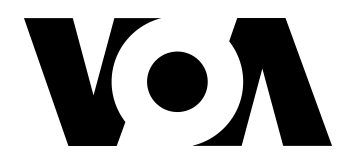By Diana Novak Jones, Renee Hickman and Ted Hesson
CHICAGO (Reuters) -A U.S. judge on Tuesday intensified her monitoring of President Donald Trump's immigration crackdown in Chicago, requiring a top official to appear daily in court and ordering his agency to detail the use of force by its agents including firing tear gas at protesters and bystanders and to hand over body-camera video.
U.S. District Judge Sara Ellis during a hearing chastised Border Patrol commander-at-large Gregory Bovino over his agency's actions in the third-largest U.S. city and told him to get a body camera to wear himself. Ellis had summoned him to appear at the hearing after he was seen on video last week tossing a tear gas canister at protesters during an enforcement action in a neighborhood with many immigrants from Mexico.
The judge is presiding over a lawsuit challenging the legality of the tactics used by officials carrying out Trump's Chicago crackdown called "Operation Midway Blitz."
AGGRESSIVE IMMIGRATION ENFORCEMENT
The Republican president has made Chicago a focus of his aggressive immigration enforcement during the past two months. Under Bovino's leadership, federal agents have used tear gas in residential areas and forcibly subdued protesters while attempting to arrest people suspected of being in the country illegally, drawing criticism and legal scrutiny.
The plaintiffs in the case provided Ellis with video and testimony that they said showed that federal agents were violating the judge's October 9 order setting limits on their use of force.
"I am getting video that the plaintiffs file, I'm getting videos that citizens send in. And at least in the videos that I see, knowing that I am not there, it is difficult for me to see that the force being used is necessary to stop an immediate and serious threat of physical harm," Ellis told the hearing.
The judge's order required the agents to wear visible identification and restricted their use of anti-riot weapons such as pepper balls and tear gas. The judge subsequently required federal officers with body cameras to turn them on while conducting immigration enforcement and during interactions with the public.
Ellis on Tuesday ordered Bovino, who also played a lead role in Trump's immigration crackdown in Los Angeles over the summer, to come to court each weekday at 6 p.m. before a November 5 hearing to discuss the day's immigration enforcement operations.
The judge also told Trump's administration by Friday to hand over its reports on the use of force against protesters and bystanders in Chicago and corresponding body camera video dating to the beginning of the operation on September 2, and to provide this material going forward for any future instances.
Protesters, journalists and clergy sued Trump and top administration officials, accusing them of violating constitutional free speech rights and protections against unreasonable searches and seizures.
The judge denied the U.S. Justice Department's request to pause her order requiring Bovino's daily appearances. The Justice Department and Department of Homeland Security did not immediately respond to requests for comment.
BORDER PATROL TACTICS
During the hearing, Ellis mentioned an incident on Saturday in the Old Irving Park residential neighborhood in which agents tackled residents and fired tear gas without warning, according to court declarations by two witnesses. One of the witnesses said he was preparing to take his children to a Halloween parade before agents arrived and deployed tear gas.
"Kids dressed in Halloween costumes, walking to a parade, do not pose an immediate threat for the safety of a law enforcement officer," Ellis said. "They just don't. And you can't use riot-control weapons against them."
Ellis urged Bovino to consider the lives of local children who have a right to feel safe in their neighborhoods.
"These kids, you can imagine their sense of safety was shattered on Saturday," Ellis said. "It's going to take a long time for that to come back, if ever."
The judge, an appointee of Democratic former President Barack Obama, said that protesters calling for federal agents to leave Chicago does not warrant the use of tear gas.
Bovino said he was unable to speak about certain incidents without documentation of all the facts but asserted that decisions on using force were "dependent on the situation."
When Ellis pressed Bovino about the judge's order requiring agents to wear body cameras when available, he said that "99%" of Border Patrol personnel in Chicago had them but that he personally did not.
"I've not received a body-worn camera or the training," Bovino said.
Ellis told Bovino to get a camera and training on how to use it by Friday.
In response to protests against "Operation Midway Blitz," Trump has attempted to send hundreds of National Guard troops to Illinois to quell what his administration has called violence against federal law enforcement, but the move has been halted for now by another court.
(Reporting by Diana Novak Jones and Renee Hickman in Chicago and Ted Hesson in Washington; Editing by Alexia Garamfalvi, Will Dunham and Lisa Shumaker)








